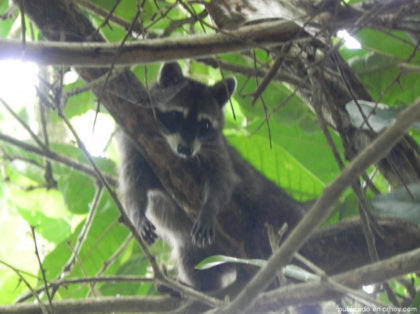
More than 20% of the Costa Rican territory is made up of different Protected Wild Areas that hold 5% of the world’s biodiversity. The Manuel Antonio National Park (PNMA) is the most visited in the country thanks to its calm waters, lush vegetation and animals such as monkeys, raccoons, coatis and hundreds of birds and reptiles that can be seen on each visit, making it the favorite of thousands of national and foreign tourists.
According to the data of the park administration, in 1990 the visitation was 127 thousand tourists per year, in 2015 it increased to 418 thousand, for 2016 it was around 445 thousand and in 2018 it reached 524, 906 people. Although the park can receive tourists, its primary objective is to protect the endemic flora, fauna and habitat of species that are endangered or threatened with extinction.
To safeguard this objective, a maximum number of visitors allowed per day, known as load capacity, is established. In the PNMA, this load capacity has historically been disregarded, which causes that the natural resources of the park are being subjected to high pressure given the large number of tourists that are allowed to enter.
The wildlife that lives in the park, mainly those animals that move through the area of public use are subject to much pressure by the number of people entering daily, some species may not have the ability to adapt to this situation and this it can cause stress, and deteriorate their health,”
said Laura Porras, a researcher at the International Institute for Wildlife Conservation and Management of the National University (ICOMVIS-UNA).
According to the specialist, there are other species that have the ability to adapt to the presence of human beings and rather take advantage of the amount of “artificial foods” that tourists carry, which is detrimental to the animals.
Studies carried out by ICOMVIS-UNA have determined that due to the relationship between the number of tourists entering the park with the availability of these foods, the behavior patterns of white faced monkeys and raccoons have been visibly altered,”
said Porras.
For years, according to Grace Wong, director of ICOMVIS-UNA, there have been tourists bitten by raccoons, monkeys and lizards in the area of public use.
This situation occurs because tourists offer food to animals and over time these have gotten used to it (to contact with people); even their young have learned to take food from the bags of tourists. Luckily, none of these “interactions” has gone beyond a bite or a scratch, nor has the transmission of a disease occurred, but potentially a dangerous situation can occur.”
It is documented that since the 1980s, in the PNMA, there have been negative interactions between wildlife and visitors to the park. Since that time, ICOMVIS-UNA has made efforts to generate information that helps the park administration to make decisions to reduce this negative impact.
Recently, a study from 1989 was repeated and it was determined that the activity of the raccoons in the area of public use of the PNMA is basically diurnal (which is not natural) and is directly related to the presence of visitors at Manuel Antonio, Espadilla and Gemelas beaches. The raccoons have adjusted their activity schedule to tourist visitation schedules to obtain food from visitors.